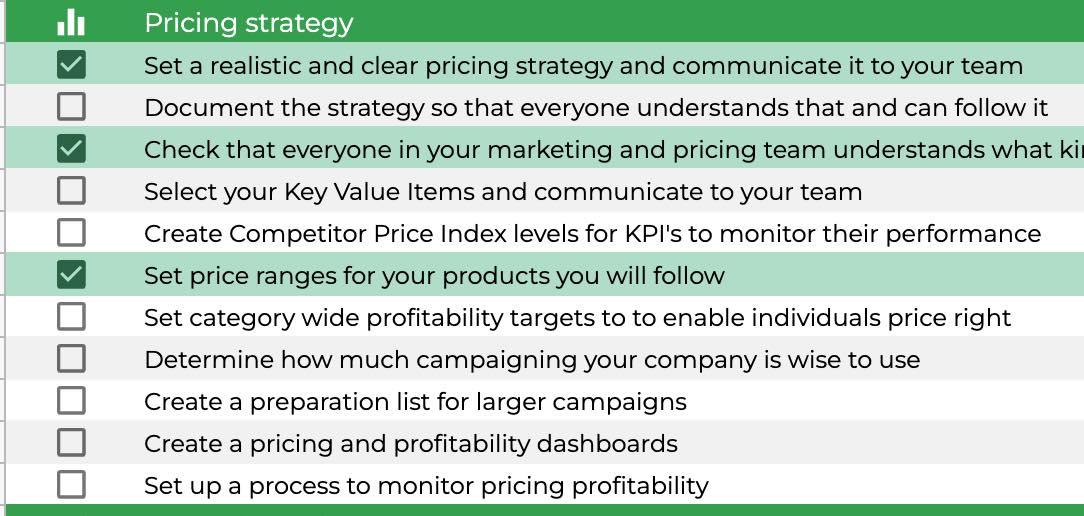The Connection In Between Brand Name Positioning and Your Pricing Strategy
The Connection In Between Brand Name Positioning and Your Pricing Strategy
Blog Article

Master Effective Prices Strategies to Optimize Profit
In the ever-evolving landscape of commerce, grasping effective pricing techniques is important for businesses intending to take full advantage of earnings. A nuanced understanding of prices psychology can considerably influence consumer actions and buying choices.
Comprehending Rates Psychology
Understanding rates psychology is crucial for services aiming to optimize their rates techniques. This field analyzes just how customers perceive prices and just how these perceptions affect their purchasing decisions. Trick principles in rates psychology consist of the anchoring effect, where the initial rate presented acts as a referral factor for consumers, and the idea of price level of sensitivity, which differs amongst different client segments.
Furthermore, companies can utilize the idea of perceived worth, where the regarded benefits of an item or solution can warrant a higher price factor. For example, premium rates can develop a mood of exclusivity, drawing in consumers that connect higher prices with premium top quality. On the various other hand, mental pricing, such as establishing a cost at $9.99 instead of $10, can substantially impact customer habits by making prices show up a lot more attractive.
Moreover, deficiency and necessity can improve the perceived value of items, triggering quicker purchasing decisions. Understanding these psychological triggers makes it possible for companies to create pricing methods that not just drive sales however also foster customer loyalty. Therefore, understanding rates psychology is essential for efficient pricing approach formula, resulting in improved profitability and market positioning.
Carrying Out Value-Based Rates

Next off, segment your customers based on their willingness to pay and the value they regard. By doing so, you can customize offerings and rates techniques to align with various sectors.
After gathering insights, set prices that mirror the maximum amount a customer agrees to pay, making sure that they view a reasonable exchange for the value obtained. Connect the worth proposal successfully, highlighting the benefits and differentiators of your offering. Ultimately, continuously keep an eye on market conditions and consumer comments to improve your pricing method gradually - Pricing Strategy. By applying value-based rates, services can boost earnings while fostering long-lasting consumer loyalty.
Exploring Dynamic Rates Designs
In today's swiftly transforming market landscape, dynamic prices designs have become an effective technique for companies looking for to enhance revenue and reply to fluctuations in need. These versions permit business to change their prices in real-time based upon various factors such as client habits, market trends, and supply levels. By leveraging information analytics and algorithms, companies can identify optimal prices points that maximize sales while staying competitive.
Dynamic prices can take different forms, consisting of time-based pricing, where rates vary based on time of day or season, and demand-based prices, which changes rates according to present consumer need. This flexibility not just improves productivity yet also boosts consumer fulfillment by providing prices that show real-time market conditions.
Applying vibrant see it here rates needs a durable technological framework and a deep understanding of consumer segments. Transparent interaction concerning prices adjustments can assist minimize consumer dissatisfaction and foster count on, eventually leading to continual productivity in a competitive market.
Analyzing Rival Rates
Monitoring rival prices is essential for services aiming to maintain an one-upmanship in their particular markets. By analyzing competitors' prices methods, business can identify market fads, comprehend consumer preferences, and readjust their pricing accordingly. This analysis includes gathering data on rivals' costs, marketing strategies, and product offerings to inform prices decisions.
To efficiently analyze rival rates, services ought to make use of different devices and strategies, such as cost monitoring software, marketing research records, and consumer comments. This information can expose exactly how rivals position their services and products, enabling companies to distinguish their offerings or adopt comparable methods to stay appropriate.
Furthermore, it is important to classify rivals into indirect and direct competitors. Direct rivals offer comparable product and services, while indirect rivals might meet the very same client demand with various options. Comprehending the subtleties in between these groups will allow companies to tailor their rates techniques better.
Ultimately, ongoing rival rates analysis is important for making educated rates choices. It allows companies to continue to be nimble in response to market changes, ensuring they can seize possibilities and minimize dangers associated with rates techniques.
Examining Rates Efficiency
Comprehending just how competitor prices affects market characteristics leads to an all-natural focus on reviewing rates efficiency within one's own business. This examination is essential for determining locations of strength and opportunities for renovation, inevitably boosting success.

Furthermore, performing regular prices audits can reveal discrepancies between anticipated and real performance. This entails contrasting rates information across different sections and channels to understand variances and identify trends. In addition, integrating customer responses can page offer insights into viewed value versus actual prices, ensuring alignment with market expectations.
Lastly, leveraging information analytics tools can help with deeper insights right into click here for more info prices performance, enabling companies to make data-driven changes (Pricing Strategy). By continually evaluating pricing performance, companies can adapt to market modifications and enhance their strategies, making sure sustained earnings in a competitive landscape
Conclusion
By leveraging rates psychology, services can boost regarded value and tailor rates to varied consumer sectors. The fostering of vibrant and value-based pricing models promotes real-time adjustments based on need and customer determination to pay.
Recognizing pricing psychology is critical for organizations intending to maximize their prices strategies. Recognizing these emotional triggers allows businesses to develop rates approaches that not only drive sales yet also foster customer commitment. Thus, mastering rates psychology is necessary for efficient rates strategy formulation, leading to enhanced earnings and market positioning.
By assessing rivals' prices techniques, firms can recognize market fads, understand customer preferences, and adjust their pricing appropriately. By leveraging prices psychology, organizations can boost regarded worth and tailor pricing to diverse consumer segments.
Report this page